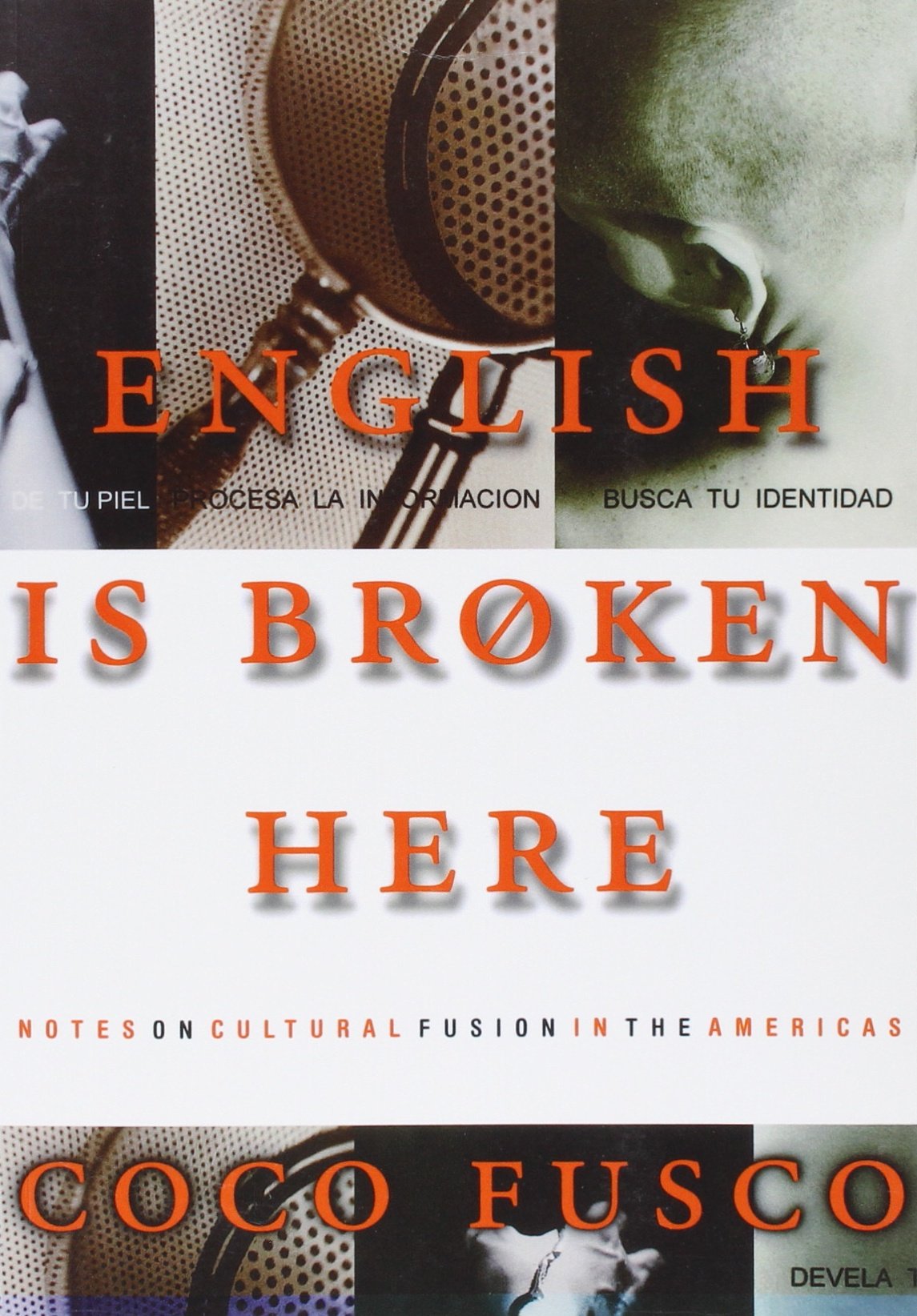This collection of Fusco's essays and reviews touches on much that concerns the art world and Hispanic Americans. Fusco, a Cuban American, is of Florida extraction, but her work reminds me a lot of much of what I would come across growing up in Southern California. It is art, but it is also blatantly political. This combination is one that some artists eschew, but not, it seems, many Hispanics--the subject of several of Fusco's essays and reviews. I never much cared for art that was so tied to politics, and yet now moving toward two decades since I lived in California, I sort of miss some of this.
The most interesting to me of Fusco's projects is one that she writes about in "The Other History of Intercultural Performance" and that was the basis for the documentary The Couple in the Cage. The essay is a discussion of a performance art piece that she performed with Guillermo Gómez-Peña. In it, the two of them traveled the nation as an example of a couple of people from a recently discovered exotic tribe. The practice of caging human beings and placing them in exhibits was not unknown in the nineteenth century, and bringing this practice to the late twentieth sheds light on both the previous century and our culture today. The "performance" that the couple exhibits becomes, then, really a performance of the audience itself--how do people react to something that seems so utterly barbaric (i.e., caging other humans)? It's a fascinating film, and an interesting essay. Years ago, when I first came across this work in a class, I was also teaching at the time Kafka's "The Hunger Artist," and matching this essay up with that story was rather enlightening.
Friday, June 11, 2010
On "English Is Broken Here" by Coco Fusco ***
Labels:
Books,
Coco Fusco,
Nonfiction,
Three-Star Nonfiction
Subscribe to:
Post Comments (Atom)







No comments:
Post a Comment